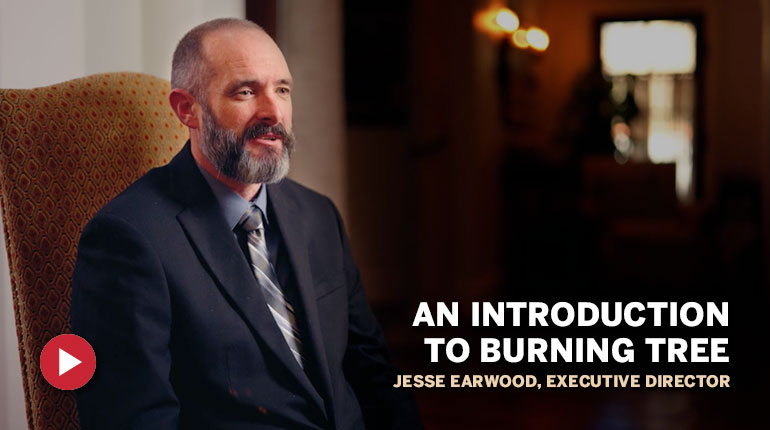Bipolar II Disorder & Substance Abuse in a Dual Diagnosis
Bipolar II Disorder, characterized by patterns of hypomanic and depressive episodes, presents unique challenges in diagnosis due to the subtlety of its symptoms, particularly the hypomanic episodes that might not be as outwardly disruptive as those in Bipolar I.
The significance of recognizing and addressing the high risk of substance abuse within this population cannot be overstated, as it complicates both the manifestation and management of the disorder.
Bipolar II Disorder: A DSM-5 Overview
The Diagnostic and Statistical Manual of Mental Disorders, Fifth Edition (DSM-5), classifies Bipolar II Disorder as a mental health condition characterized by a pattern of depressive episodes and hypomanic episodes without the full-blown manic episodes that are present in Bipolar I Disorder. This distinction is crucial for diagnosis and treatment.
Key Features of Bipolar II Disorder
Hypomanic Episodes: These are periods of elevated, expansive, or irritable mood and increased activity or energy lasting at least four consecutive days, present most of the day, nearly every day. Hypomanic episodes in Bipolar II are less severe than the manic episodes seen in Bipolar I Disorder and do not cause significant impairment in social or occupational functioning.
Depressive Episodes: Individuals must also have experienced at least one major depressive episode that lasts for at least two weeks, where five or more depressive symptoms are present most of the day, nearly every day.

Essential Facts & Insights
Cycling Between Episodes
Individuals with Bipolar II Disorder experience evident changes in mood and behavior that are different from their usual behavior, cycling between hypomanic and depressive states with periods of everyday mood in between.
Severity & Impact
While hypomanic episodes are not as severe as manic episodes, the depressive episodes in Bipolar II can be just as severe, if not more so, than those in Bipolar I Disorder. These depressive episodes often cause significant distress and impairment in daily functioning.
Diagnosis Challenges
Bipolar II Disorder can be challenging to diagnose due to the subtlety of hypomanic episodes. Individuals might not recognize these episodes as problematic, often seeking help only during periods of depression.
Treatment
Treatment typically involves a combination of psychotherapy and medications, such as mood stabilizers and, in some cases, antidepressants. It's essential for treatment to address both the hypomanic and depressive phases of the disorder.
Comorbidity
Similar to Bipolar I Disorder, Bipolar II Disorder often co-occurs with other mental health conditions, including anxiety disorders and substance use disorders, which can complicate the clinical picture.
The introduction of Bipolar II Disorder in the DSM-5 acknowledges the spectrum of bipolar disorders. It highlights the need for specific diagnostic criteria to identify and treat this variant of bipolar disorder effectively. Understanding the nuances of Bipolar II is crucial for providing appropriate care and improving outcomes for those affected.
Comparative Analysis: Bipolar I Versus Bipolar II
For a nuanced understanding of Bipolar I and Bipolar II Disorders, it’s essential to compare their characteristics, as delineated by the DSM-5. This comparative overview elucidates the distinctions based on the nature of episodes experienced, the severity, and their implications for daily life.
| Feature | Bipolar I Disorder | Bipolar II Disorder |
|---|---|---|
| Manic Episodes | Required for diagnosis. At least one episode lasts 7 days or is severe enough to require hospitalization. May include psychotic features. | Not present. No full-blown manic episodes occur. |
| Hypomanic Episodes | May occur but is not required for diagnosis. | Required for diagnosis. At least one episode lasting at least 4 consecutive days without the severe impairment associated with mania. |
| Depressive Episodes | Often occur but not required for diagnosis. Can be severe and last for at least 2 weeks. | Required for diagnosis. At least one major depressive episode lasting at least 2 weeks. |
| Severity of Episodes | Manic episodes can lead to significant impairment in social or occupational functioning or necessitate hospitalization. | Hypomanic episodes are less severe, not leading to the marked impairment seen in manic episodes. Depressive episodes can be as severe as in Bipolar I. |
| Psychotic Features | Possible during manic episodes. | Not present in hypomanic episodes. |
| Cycling | Rapid cycling between mood states is possible but not required for diagnosis. | Experiences changes in mood states but is defined by the absence of manic episodes. |
| Overall Impact | Generally considered more severe due to the potential for manic episodes with psychosis and significant life impairment. | Considered less severe in terms of mania but depressive episodes can be just as debilitating. |
This side-by-side layout provides clarity on the diagnostic criteria and clinical presentation of Bipolar I and Bipolar II Disorders, facilitating a better understanding of their distinct features and the importance of targeted treatment strategies.
Bipolar II Disorder: At Risk With Substance Abuse
Individuals with Bipolar II Disorder are at an increased risk of substance abuse, which can complicate the course and treatment of the disorder. Here are the most common substances abused and their impact on Bipolar II Disorder, along with relevant age and sex-specific information:
Commonly Abused Substances
- Alcohol: The most commonly abused substance among those with Bipolar II Disorder. Alcohol can temporarily alleviate symptoms of depression and anxiety, but its depressant effects can worsen depressive episodes and negate the effects of mood stabilizers.
- Cannabis: Often used by individuals with Bipolar II to manage symptoms of anxiety and depression. While it might provide short-term relief, cannabis use can lead to more rapid cycling between mood states and increase the risk of depressive episodes.
- Stimulants (including cocaine and amphetamines): May be used to enhance mood and energy during depressive episodes. However, stimulants can lead to hypomanic or manic episodes in individuals with Bipolar II Disorder and lead to increased mood instability.
- Benzodiazepines: Prescribed for anxiety or sleep disturbances, these can be misused by individuals seeking immediate relief from symptoms. Dependence and withdrawal from benzodiazepines can exacerbate mood swings and depressive symptoms.
- Prescription Painkillers (opioids): May be used or misused for their euphoric effects. Opioids can increase the risk of depressive episodes and contribute to a cycle of dependence and mood disorder exacerbation.

Age and Sex-Specific Information
Age-Related Demographics
Young adults are particularly vulnerable to substance abuse, partly due to the typical age of onset for Bipolar II Disorder and the social contexts that might encourage substance use.
Sex-Related Demographics
While both men and women with Bipolar II Disorder are at risk for substance abuse, men may have slightly higher rates of substance use and abuse. However, women with Bipolar II may experience more significant impacts on their mood stability due to hormonal influences affecting both their bipolar symptoms and substance use effects.
Impact of Substances on Bipolar I Disorder
Understanding the relationship between substance abuse and Bipolar II Disorder is critical for effective management and treatment. Integrated treatment approaches that address both substance use and bipolar symptoms are essential for achieving stability and improving overall quality of life for individuals with Bipolar II Disorder.
Alcohol and Cannabis
Both alcohol and cannabis can lead to a worsening of depressive symptoms and make mood stabilizers less effective.
Stimulants
Use of stimulant medication can increase the risk of transitioning into hypomanic episodes and can disrupt the effectiveness of treatment.
Benzodiazepines and Opioids
Risk of dependence and withdrawal can exacerbate mood swings and depressive symptoms, complicating the treatment for Bipolar II Disorder.
The Significance of Recognizing the Risk of Substance Abuse
The DSM-5’s inclusion of Bipolar II Disorder alongside a detailed comparison with Bipolar I Disorder illuminates the spectrum and complexity of bipolar conditions. This distinction is crucial for accurate diagnosis and tailored treatment approaches.
Bipolar II Disorder, characterized by patterns of hypomanic and depressive episodes, presents unique challenges in diagnosis due to the subtlety of its symptoms, particularly the hypomanic episodes that might not be as outwardly disruptive as those in Bipolar I.
The significance of recognizing and addressing the high risk of substance abuse within this population cannot be overstated, as it complicates both the manifestation and management of the disorder. Integrated treatment strategies, awareness, and understanding of the nuanced differences between Bipolar I and II are essential for providing adequate care and improving outcomes for those affected.
This comprehensive overview underscores the importance of a subtle approach to bipolar disorders, highlighting the need for awareness, proper diagnosis, and a dual focus on treating both mood disorders and any concurrent substance abuse to optimize patient care and outcomes.





